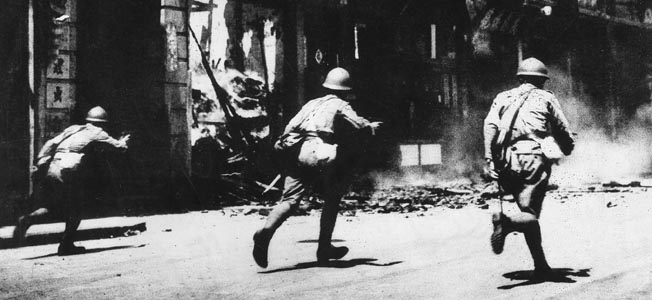Dear Editors:
I am writing to point out a small flaw in the June 2005 issue. I was highly impressed by Ludwig Heinrich Dyck’s “Charlemagne: Warlord of the Franks.” The article was well done.
On page 64, the article states that in the year 476 ad, a barbarian general, King Clovis, deposed Romulus Augustulus, the last of the Roman emperors, thus ending the Western Roman Empire. Even though Clovis was undoubtedly very powerful, being the man who consolidated the Frankish realm, the fact is that Odoacer, son of Edeco, an important German follower of Attila, and also a possible Scirian, became the king of Italy in 476 ad when he deposed Romulus Augustulus, thereby ending the Western Roman Empire.
Odoacer was a mutinous mercenary captain who served under Roman commanders before rebelling in 476 ad.
Odoacer recognized the sovereignty of the eastern emperor, Zeno, and supported the Roman senate. He was an Arian, but still had good relations with the Catholic Church, which made his governing of Italy trouble-free until he was overthrown after 489 ad by Theodoric and murdered while attending a banquet in Ravenna.
For reference, see History of Rome by Cory and Scullard, and Oxford Classical Dictionary, 3rd edition.
Thank you and I anticipate reading your excellent periodical.
Donald Traub
Houtzdale, Pennsylvania
Admiral Canaris
Dear Editors:
First, let me thank you for an excellent historical magazine. I usually enjoy and admire all the articles. One exception was in the December 2005 issue with the article addressing the supposed anti-Nazi activities of Admiral Wilhelm Canaris. Canaris was always regarded by Allied intelligence as a Nazi—even after his supposed “conversion.” As the author of A Man Called Intrepid, the official biography of Sir William Stephenson, I can tell you that Stephenson noted, “Admiral Canaris was known as ‘K’ within the British Foreign Intelligence Office. His attempts to change sides once Hitler was doomed were treated with contempt by INTREPID, who remembered that Canaris’s agents had posed as peacemakers or anti-Nazi Germans to disarm influential British and American personalities before the war. K was executed on Hitler’s orders, giving rise to speculation long afterward that he was never fully committed in the secret war against the West. Yet, until the tide turned against Nazi Germany and he fell from Hitler’s favor, K was never regarded as a cunning and formidable foe.” Most of the article contains no verifiable historical evidence—only surmise and conjecture that Canaris was an anti-Nazi. Canaris and men like him helped Hitler and one of the most vicious regimes in history to come to power, plunge a world into war, and commit crimes against humanity on an unprecedented scale. He was not a hero or a patriot.
Aaron R. Woodard
Sioux Falls, South Dakota
Dear Editors:
I really enjoy every issue of Military Heritage. I especially appreciated the December 2005 issue with its Militaria section on tank helmets.
People forget the complexities in the development of the ordinary equipment than enabled men to wage war on each other. This was a fine example of one of those pieces of equipment.
I was glad to see the author included General George S. Patton’s contribution to the history of the helmet by buying football helmets for his tankers in 1938. Just to add to the Patton story: he liked the football version of the helmet so much that he donned one in 1943 when he was promoted to lieutenant general in North Africa. It was gold with a red-white and yellow stripe over the top to represent infantry, artillery and cavalry— the traditional colors of the tank corps (they also made up every armored patch). He had three stars welded to the helmet and posed for pictures of himself in front of a Stuart tank.
Patrick O’Malley
Tribeca, New York









Join The Conversation
Comments
View All Comments